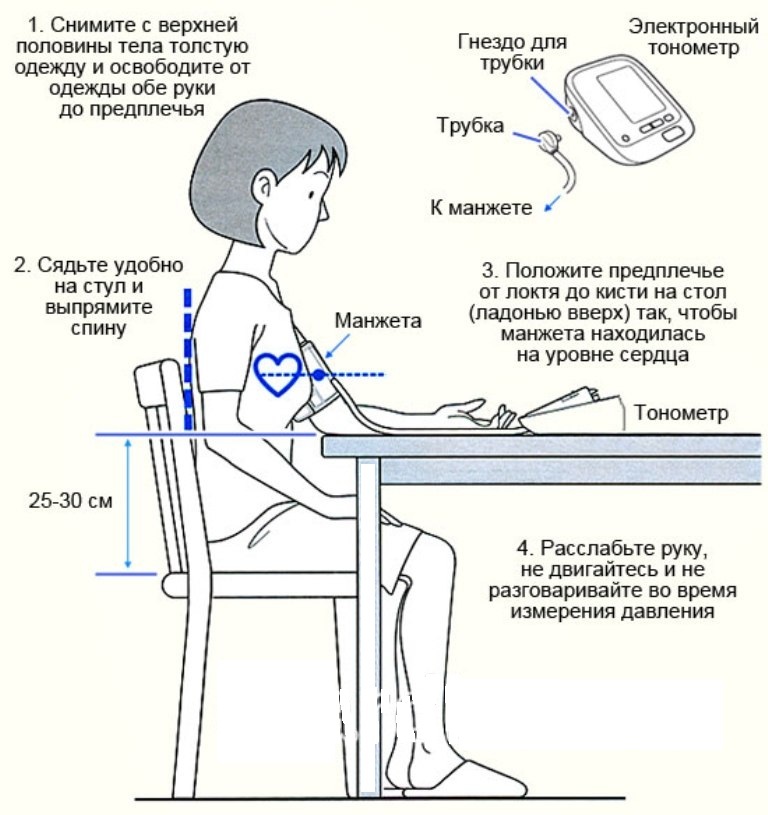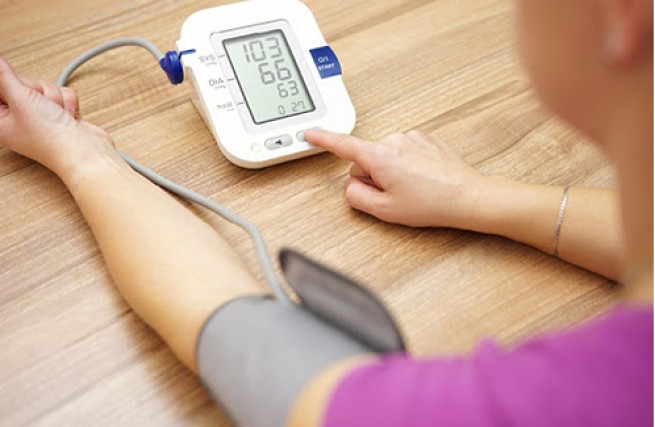The position of your hand when you take your own blood pressure at home plays a key role.
A new study provides convincing evidence that incorrect hand position can significantly distort measurement results, note researchers from Johns Hopkins University. They strongly recommend that both patients and doctors pay attention to this.
Hypertension is a common disease that affects almost half of the adult population. The older we get, the higher the risk of developing this disease. Therefore, we are all advised to regularly measure our blood pressure. But how accurate are our measurements? The answer to this question is provided by a new study that examined the results of measurements when a person sits with his arm in three positions:
- Leaning on the desk.
- Leaning on your hip.
- Hand lowered along the body.
The study results were published in the medical journal JAMA Internal Medicine. The study involved 133 volunteers aged 18 to 80 years, of whom 53% were women.
36% of participants had hypertension, and 41% were obese, defined as a body mass index greater than 30.
The researchers measured the participants' blood pressure and found significant differences depending on hand position. When the hand was rested on the thigh, systolic blood pressure increased by almost 4 millimeters of mercury. And when the arm “hanged” on its side without support, the systolic pressure increased by 7 mm Hg. Art.
What do “high” pressure readings mean? Systolic pressure is a large number in the measurement results. It corresponds to the pressure exerted by blood on the walls of the arteries when the heart contracts. Systolic (higher) pressure is classified as follows:
- A pressure below 120 mm Hg is considered ideal. Art. (or 12 as it is often called).
- Pressure in the range from 120 to 129 mmHg is considered elevated. Art.
- Stage 1 hypertension is diagnosed when the pressure is from 130 to 139 mmHg. Art.
- Stage 2 hypertension is defined as a blood pressure of 140 mm Hg. Art. and higher.
- Hypertensive crisis is diagnosed when the pressure is more than 180 mm Hg. Art.
The difference is 4 and 7 mm Hg. Art., identified in the study, means that even a person with an ideal blood pressure of 119 mm Hg. Art. blood pressure may be elevated. This is because his systolic pressure will be 123 or 126 mmHg. Art. depending on the position of the hand (or 12.3 and 12.6, as we used to write it). On the other hand, a person with high blood pressure, for example, 129 mm Hg. Art., can also become hypertensive, since depending on the position of his hand, the indicator can be 133 or 136 mm Hg. Art.
To properly measure your blood pressure at home, the American Heart Association (AHA) recommends following a few simple rules:
- Use the appropriate size cuff for your hand. Don't tighten it too tight. But at the same time, make sure that your hand does not “slide” freely in it.
- Sit upright, leaning on your back, with the soles of your feet touching the ground well. Don't cross your legs.
- Keep your hand in the correct position. This position assumes that the cuff is at a height corresponding to the middle of the heart, and the forearm and the end of the hand rest on the table/bedside table.

However, many studies have shown that even doctors often measure patients' blood pressure while they sit in an examination chair with little to no support from their arms or body.
In the new study, scientists strictly followed all the rules for correct measurement. Before the procedure, volunteers:
- Empty your bladder.
- We walked for two minutes.
- Then sit in a comfortable position for five minutes, properly supporting your back and legs.
After this, their blood pressure was measured (even though the person did not get up from his seat). Since the measurements were taken with the arm in different positions, between the two measurements the patient again walked for two minutes and rested for five minutes, as previously described.
The new study also found that when Improper hand placement in volunteers also increased diastolic blood pressure. This small number in the measurement corresponds to the pressure of blood on the walls of the arteries when the heart is resting between two beats.
An increase in diastolic pressure is also important. It was 4 mm Hg. Art., when the hand was on the thigh, and 4.4 mm Hg. Art., when it hung along the body.
Diastolic (low) blood pressure is considered normal if it is below 80 mmHg. Art. (or 8). From 80 to 89 mm Hg. means stage 1 hypertension, from 90 and above – stage 2 hypertension. And the pressure is above 120 mm Hg. indicates a hypertensive crisis.






More Stories
Egg cryopreservation in Greece: process, costs and problems
Pro- and prebiotics, why they are needed and "what do they eat them with?"
Coronavirus and seasonal flu: 14 deaths, 7 new intubations and 509 hospitalizations